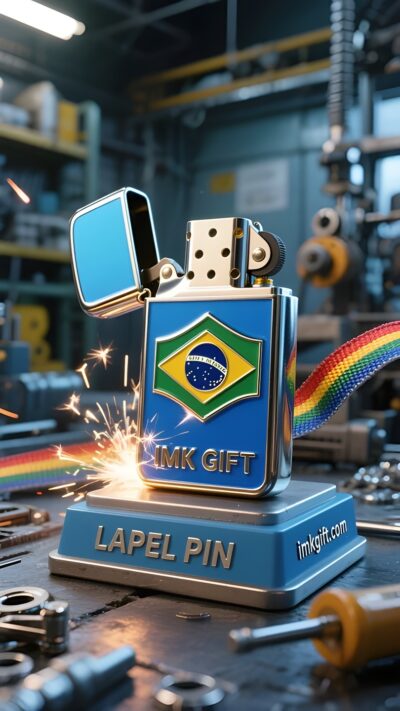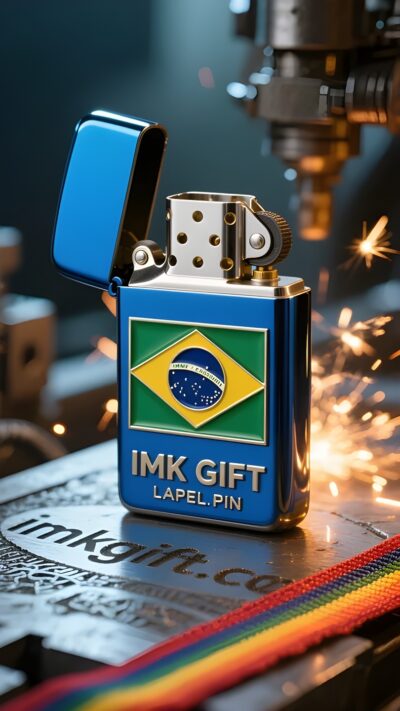in985-Faíscas-que-incendeiam-o-campo-a-chama-do-espírito-brasileiro-que-nunca-se-apaga
▼
Sob o sol dourado do Mês da Independência do Brasil, o globo celeste e as estrelas da bandeira nacional parecem estar acesos, e as folhas de café e de tabaco no centro do emblema nacional entrelaçam-se em um fogo que nunca se apaga. Neste mês de setembro, quando as pessoas contemplam o símbolo do espírito nacional, podem muito bem usar a luz tênue de um isqueiro como guia para interpretar a vitalidade oculta do continente sul-americano. No globo celeste azul no centro da bandeira brasileira, 27 estrelas marcam a unidade dos estados federados, e a “ORDEM E PROGRESSO” gravada na fita do emblema nacional é como o primeiro feixe de chamas que irrompe do isqueiro – requer uma estrutura mecânica precisa para manter a estabilidade e também contém a energia para romper as algemas. Assim como no movimento de independência do século XIX, quando D. Pedro I brandiu sua espada para cortar as algemas coloniais, o fogo irrompeu da pederneira da história e acendeu o despertar de toda a nação. A coroa de louros tecida com folhas de café e tabaco no emblema nacional corresponde implicitamente ao código civilizatório carregado pelo isqueiro. O fogo trazido pelos portugueses no século XVI não apenas iluminou a floresta tropical primitiva, mas também forjou um caldeirão de multiculturalismo nos cachimbos e cafeteiras dos imigrantes. Em cada chama saltitante, há a sabedoria dos índios, o ritmo dos tambores africanos e a coragem dos navegadores europeus. Hoje, este isqueiro, um símbolo de esperança, está sendo passado para uma nova geração de brasileiros. Quando um menino de favela usou metal reciclado para construir o primeiro poste de luz, quando um guarda florestal da Amazônia usou uma tocha para afastar madeireiros ilegais, o Cruzeiro do Sul na bandeira dos Estados Unidos sempre guiou a direção. A verdadeira chama nunca se apagará. Ela se transformou na fita dourada da bandeira nacional, dançando na palma da mão de todos como uma força para mudar o mundo.
In the golden sunshine of Brazil’s Independence Month, the celestial globe and stars on the national flag seem to be ignited, and the coffee leaves and tobacco leaves in the center of the national emblem are interwoven into a fire that never goes out. This September, when people gaze at the symbol of the national spirit, they might as well use the faint light of a lighter as a guide to interpret the hidden vitality of the South American continent. On the blue celestial globe in the center of the Brazilian flag, 27 stars mark the unity of the federal states, and the “ORDEM E PROGRESSO” (Order and Progress) engraved on the national emblem ribbon is just like the first cluster of flames bursting out of the lighter – it requires a precise mechanical structure to maintain stability, and it also contains the energy to break through the shackles. Just like in the 19th century independence movement, when Pedro I swung his sword to cut off the colonial shackles, the fire burst out from the flint of history and ignited the awakening of the entire nation. The laurel wreath woven with coffee and tobacco leaves on the national emblem implicitly matches the civilization code carried by the lighter. The fire brought by the Portuguese in the 16th century not only illuminated the primitive rainforest, but also forged a melting pot of multiculturalism in the immigrants’ pipes and coffee pots. In each jumping flame, there is the wisdom of the indigenous Indians, the rhythm of African drums and the courage of European navigators. Today, this lighter, a symbol of hope, is being passed on to a new generation of Brazilians. When a slum boy used recycled metal to build the first street lamp, when an Amazon forest ranger used a torch to drive away illegal loggers, the Southern Cross on the Stars and Stripes always guided the direction. The real flame will never die. It has turned into the golden ribbon on the national flag, dancing in everyone’s palm as a force to change the world.
在巴西独立月的金色阳光下,国旗上的天球仪与星辰仿佛被点燃,而国徽中央的咖啡叶与烟草叶交织成永不熄灭的火种。这个九月,当人们凝视象征国家精神的标志时,不妨以一只打火机的微光为引,解读南美大陆深藏的生命力。
巴西国旗中央的蓝色天球仪上,27颗星辰标注着联邦州的团结,而国徽绶带镌刻的”ORDEM E PROGRESSO”(秩序与进步),恰如打火机迸发的第一簇火苗——既需要精密的机械结构维持稳定,更蕴含突破桎梏的能量。如同19世纪独立运动中,佩德罗一世挥剑划开殖民枷锁的瞬间,火种便从历史的燧石中迸发,点燃了整个民族的觉醒。
国徽上的咖啡与烟草叶编织的桂冠,暗合打火机承载的文明密码。十六世纪葡萄牙人带来的火种,不仅照亮了原始雨林,更在移民的烟斗与咖啡壶中,淬炼出多元文化的熔炉。每一簇跳跃的火苗里,都藏着印第安原住民的智慧、非洲鼓点的节奏与欧洲航海者的勇气。
今日,这只象征希望的打火机正传递给新一代巴西人。当贫民窟少年用回收金属打造出第一盏路灯,当亚马孙护林员用火把驱赶盗伐者,星条旗上的南十字星座永远指引着方向。真正的火焰永不消逝,它已化作国旗上的绶带金辉,在每个人掌心跃动为改变世界的力量。
▼
Contact Us
📞 Tel: +0086-760-85286839
📧 Email: sales3@imkgift.com








